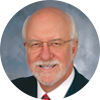It's been about three years since I began my service with the Neighborhood Christian Clinic, and it's time for an update. Just in case you didn't read the first report, let me tell you how I got started volunteering at the facility.
I promptly volunteered to start a chiropractic service and met with the clinic's medical director, a pediatrician. He was a bit cool to the idea, but my Christian qualifications were satisfactory to him, so he decided to give it a go. He was quick to point out that they had very little room, and that I would probably be working out of the kitchen. And that is exactly where I started out, in makeshift quarters. I moved the lunchroom table against a far wall and set up a portable table right in the middle of the kitchen. Talk about working your way up from the bottom!
That was three years ago; let me bring you up to date. Discretion being the better part of valor, I kept my mouth shut for the first six months and helped as many patients as I could. Befriending the nursing staff was strategic: They all became patients during those early days. Initially, the medical doctors were a bit standoffish, but this began to change when the medical director hurt his neck and could find no relief from his colleagues. I suppose it was a matter of the proverbial last resort: He decided to see what chiropractic care could do for him. A couple of adjustments later, his cervical trouble was much relieved, and his attitude had changed completely. There's just no better practice-builder than a satisfied patient.
As my six-month probationary period drew to a close, the medical director announced to the staff that a decision had been reached: Musculoskeletal patients no longer required screening by the family practitioners, and could go directly to the chiropractic service. This new policy of direct access met with wide and immediate approval. One of our nurses commented that this was a very practical decision - triaging patients took a lot of time, and if those who needed to see the chiropractor could direct themselves to me, it would be a much more efficient process. Although I had already come to feel accepted by all of the providers, this was the moment of official endorsement. Chiropractic, they had decided, was okay!
Another six months passed; I had been attending to patients very faithfully every Tuesday morning. We typically began our day with a staff meeting, and on this occasion, one year into my service with the Neighborhood Christian Clinic, the medical director spontaneously remarked that the administration of Motrin and other NSAIDS (nonsteroidal anti-inflammatory drugs) to our patient population had been greatly reduced, perhaps by as much as 50 percent. The only hypothesis he could offer to explain this curious phenomenon was the addition of chiropractic services, since low back pain was the most frequent reason for prescribing these sorts of analgesics. It was an informal observation, not subjected to rigorous empirical analysis, but considering the source, it was a moment of quiet pride for me.
To my delight, the medical director indicated that he would like to have me recruit more chiropractors and serve as "Director of Conservative Care." It was more than I could have imagined a year earlier, and I promptly agreed. (Today, we have six DCs who cover the chiropractic service for a completely full schedule.) Success breeds more of the same, and another year had passed when I received a call from the chairman of the clinic's board of directors. He noted the wide satisfaction with our chiropractic services. As well, he observed, although much effort was spent in prodding some 40 other health care specialists to show up for their volunteer time, no chiropractor had ever missed an assigned day of service. Would I be willing to join the board of directors? There was need for new input, and he could see that our group was a welcome addition with a fresh perspective. I was delighted; what had begun as an individual's desire to contribute to this worthy community service was evolving into something more: a basis for fence-mending and growing mutual cooperation among otherwise alienated professional groups.
I'm pleased to report that our clinic has made real progress. Last year, we moved from our old, cramped quarters to a brand-new, 5,000 square-foot facility that is completely paid for by donations from the greater Phoenix area church congregations. U.S. Sen. Jon Kyl (R-Ariz.) helped to dedicate the clinic as a faith-based ministry. The cost to taxpayers: zero; the benefit to patients: incalculable.
Among the lessons I have learned from participating in this charity is that chiropractic care will prove itself in spite of medical opposition; indeed, in spite of chiropractors themselves. It's a lesson that parallels what doctors of chiropractic have experienced in recent years of service to the military. The concern for patient welfare that MDs and DCs share provides a common bond that overcomes traditional prejudices. Working side by side in service to patients, we find that we have more in common than legend allows.
My experience in faith-based, interdisciplinary service to the sick has also reinvigorated my confidence in the value of the adjusting art. I'm able to see my patients at the Neighborhood Christian Clinic just once a week, but this seemingly limited treatment schedule has not been a deterrent for them. Patients still seem to benefit from adjusting, they use fewer pain medications, and they offer their gratitude. When a Spanish-speaking mother approached me in the clinic parking lot to say, with the help of her young daughter as interpreter, that she loved me for taking away the pain she had endured for 10 years, I remembered why I had become a chiropractor. That, doctors, is what it is all about.
Arlan Fuhr, DC
Phoenix, Arizona
Click here for previous articles by Arlan Fuhr, DC.





